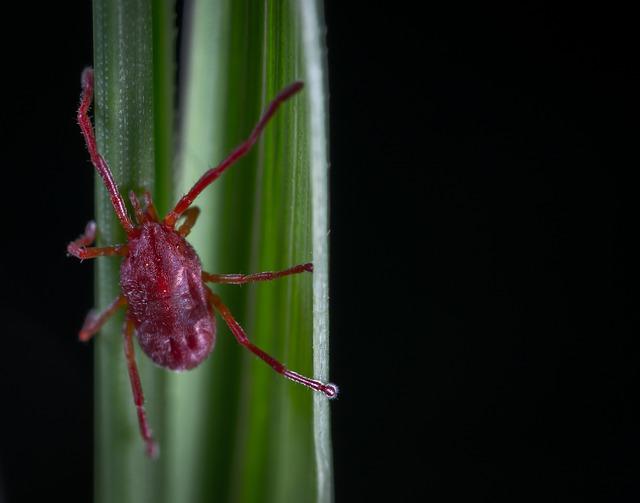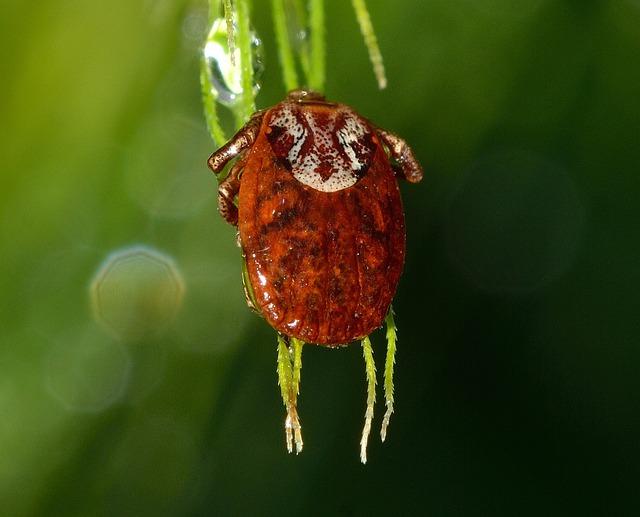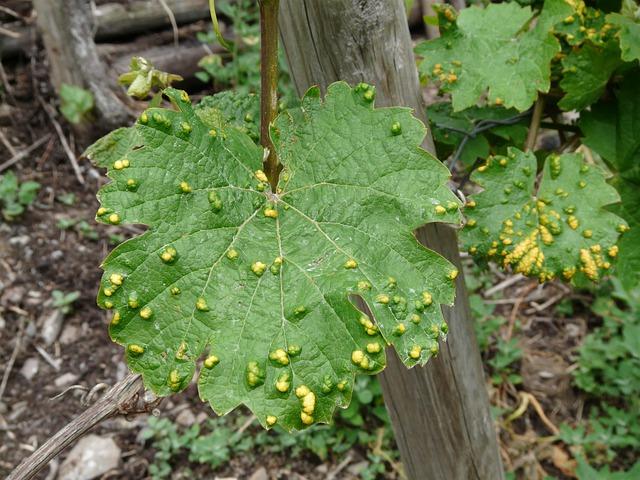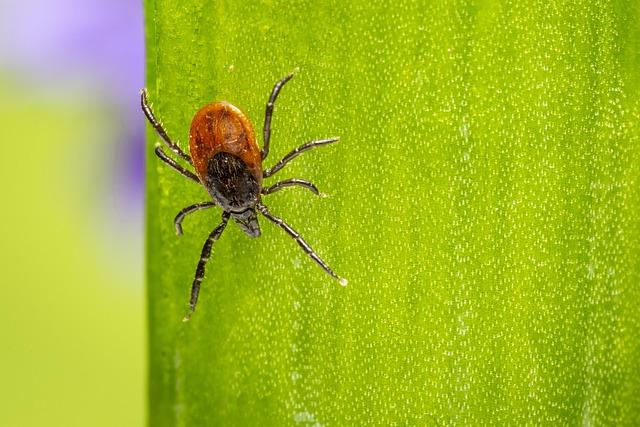“An ounce of prevention is worth a pound of cure.” – Benjamin Franklin
Clover mites are tiny, red spiders that often invade homes in large numbers. While they are not harmful to humans, they can be a nuisance. These pests are most active in the spring and fall, but they can also be found indoors during the winter.
If you think you have clover mites in your home, you may be wondering how to get rid of them. There are several ways to prevent clover mites infestation and you’ll learn about it in this post.
What Are Clover Mites?
Clover mites are tiny, red, spider-like creatures that often invade homes in large numbers. They are attracted to plants, which is why they are often found on windowsills and in gardens. While they are not harmful to humans, they can be a nuisance.

Clover mites feed on plant sap, which can damage plants. They also leave behind red stains when crushed. If you have a clover mite infestation, you may want to contact a pest control professional to get rid of them.
Where Do Clover Mites Come From?
Clover mites are very small, red insects that are related to spiders and ticks. They are often found in homes and gardens and can be a nuisance if they are not controlled. Clover mites are not dangerous to humans or animals, but they can be a nuisance because they can cause allergies in some people.
Clover mites typically live in areas with a lot of vegetation, such as gardens and fields. They feed on the sap of plants, and they are especially fond of clover. They’re sometimes seen on the sides of buildings, in cracks in the foundation, or around windows and doors.
Clover mites can be a problem in the home if they are not controlled. They can cause allergies in some people, and they can also stain fabrics and walls if they are crushed.
What Do Clover Mites Look Like?
Clover mites are small, red arachnids that are closely related to spiders and ticks. They are a nuisance pest that can invade homes and gardens in large numbers.

Meanwhile, Clover mites get their name from their fondness of feeding on clover and other grasses. They are often found in gardens, on patios, and around the edges of buildings. These pests are not dangerous to humans or animals, but their large numbers can be a nuisance. They are often found in gardens, on patios, and around the edges of buildings.
What Do Clover Mites Eat?
Clover mites are very small, red insects that feed on the sap of plants. They are often found in gardens and on houseplants. These pests can be a nuisance because they can damage plants and cause them to turn yellow or brown.

Clover mites get their name from the fact that they often feed on clover plants. However, they will also feed on other types of plants, such as roses, ivy, grass, and even trees. In fact, clover mites will pretty much eat any plant that they can find!
So, what do clover mites eat? They eat the sap of plants. This sap is found in the leaves, stems, and even the roots of plants. Clover mites suck out this sap, which damages the plant and can eventually kill it.
Clover mites are a problem for both indoor and outdoor plants. If you have clover mites in your garden, they can quickly destroy your plants. And, if you have houseplants, clover mites can quickly kill them too.
How Do Clover Mites Reproduce?
Clover mites reproduce by laying eggs. The eggs are laid in clusters of up to 50 eggs, and each female can lay up to 300 eggs in her lifetime. The eggs hatch in about two weeks and the young mites go through three stages of development before they become adults.
What Is The Life Cycle Of A Clover Mite?
Clover mites go through four stages in their life cycle: egg, larva, nymph, and adult. The eggs are laid in late summer or early fall and hatch about two weeks later. The larva that hatches from the eggs look like miniature adults, but only have six legs. They molt (shed their skin) three times before becoming nymphs. Nymphs look like adults, but are smaller and do not yet have the ability to reproduce. Adults are about 1/30 of an inch long and can live for several months.

A female can lay up to 50 eggs in her lifetime. The eggs are laid in cracks and crevices, and hatch in about two weeks. The larvae that hatch from the eggs look like miniature adults, but only have six legs. They molt three times before becoming nymphs. Nymphs look like adults, but are smaller and do not yet have the ability to reproduce. Adults are about 1/30 of an inch long and can live for several months.
They are most active in the spring and fall and can be a problem for homeowners during these times. If clover mites get into your home, they will not survive for long because they need a moist environment to live.
However, they can cause problems while they are alive. They can stain walls and furniture with their red bodies, and their bites can cause skin irritation. If you have a clover mite problem, the best thing to do is to contact a pest control professional.
How Do Clover Mites Affect Plants?
Clover mites are a type of arachnid that can be found in most parts of the world. These pests are particularly problematic for farmers and gardeners as they can cause extensive damage to crops and plants. Clover mites feed on the sap of plants, which can weaken and even kill the plant. In addition, clover mites can also transmit diseases to plants. Consequently, it is important to take measures to prevent and control clover mite infestations.
How Can You Prevent Clover Mites From Damaging Your Plants?
Clover mites are tiny pests that can cause a lot of damage to your plants. They are especially fond of tender, new growth and can quickly strip a plant of its leaves. While they are not harmful to humans, they can be a nuisance.

There are a few things you can do to prevent clover mites from damaging your plants:
- Remove any potential food sources for the mites such as weeds, fallen leaves, and other organic matter. This will make your plants less attractive to the mites and reduce the chances of an infestation.
- You can use physical barriers such as nets or screens to keep the mites away from your plants.
- Keep your plants well-watered. Clover mites prefer dry conditions and will avoid plants that are kept moist.
- Apply an insecticide to your plants. Be sure to follow the directions on the label carefully.
What Are Some Natural Predators Of Clover Mites?
There are a few different types of natural predators that can help to keep clover mite populations under control. These include other mite species, ladybugs, and lacewings.

- Mites are small, spider-like creatures that are closely related to ticks and spiders. There are many different species of mites, and some of them are predators of other mite species, including clover mites. One example of a predatory mite is the Phytoseiulus persimilis, which is commonly used in commercial greenhouses to control spider mites.
- Ladybugs are another type of predator that can help to keep clover mite populations in check. Ladybugs are small, oval-shaped insects that are typically red or orange in color, with black spots on their wings. They feed on a variety of soft-bodied pests, including aphids, mealybugs, and of course, mites.
- Lacewings are yet another type of predator that can be effective in controlling clover mite populations. Lacewings are delicate-looking insects with large, clear wings.
The larvae of lacewings are actually voracious predators, and they feed on a variety of small insects and other invertebrates, including mites.
Bonus Tips
- Keep your plants well-watered and fertilized to prevent clover mites infestation.
- Seal any cracks or openings in your foundation and around windows and doors.
- You can also install door sweeps and keep your windows closed.
- Keep your landscaping trimmed and free of debris.
- Vacuum regularly to remove any mites that may have made their way inside.
Frequently Asked Questions
- What are clover mites?
Clover mites are tiny, red mites that feed on the sap of plants. They are often found in gardens and lawns and can be a nuisance if they invade your home.
- How can I prevent clover mites from coming back to my plants?
There are a few things you can do to prevent clover mites from coming back to your plants. Always keep your plants hydrated, use a soap mixture to spray your plants and you can also employ beneficial predators like ladybugs to prevent the clover mites.
- What should I do if I find clover mites in my home?
If you find clover mites in your home, you can vacuum them up or catch them with a damp cloth. Ensure to dispose of the vacuum bag or cloth in a sealed container so that the mites cannot escape and infest your home again. You can also try to reduce the humidity in your home, as mites prefer humid conditions.
Conclusion
Clover mites are small, reddish-brown pests that often invade homes in spring and fall. While they are not harmful to humans, they can cause damage to plants. If you have a clover mite infestation, you may be wondering how to prevent them from coming back. Fortunately, we’ve listed different ways in which you can prevent these mites infestation and you can use the tips to get rid of them.
Michelle Wilde
Related posts
![]()
About Michelle Wilde
Michelle Wilde is a stay-at-home mom and avid plant lover. Armed with a post-graduate degree in Computer Science (no kidding!), she loves researching plants and landscapes. When she is not caring for her 4 kids, she spends time on her passion for plants. She blogs at www.indoorplantschannel.com, the trusted source for indoor plants.
Learn more
Subscribe
* You will receive the latest posts and updates about indoor plants!
Search
Recent Posts
Categories
- Beginner Guides (10)
- FAQ (206)
- General (2)
- How-To Guides (212)
- Indoor Plants (214)
- Pest Management (2)
- Plant Problem Solutions (4)
- Seasonal Growing (2)
- Specialized Environments (2)
- Specific Plant Care (3)
- Technical Growing (2)